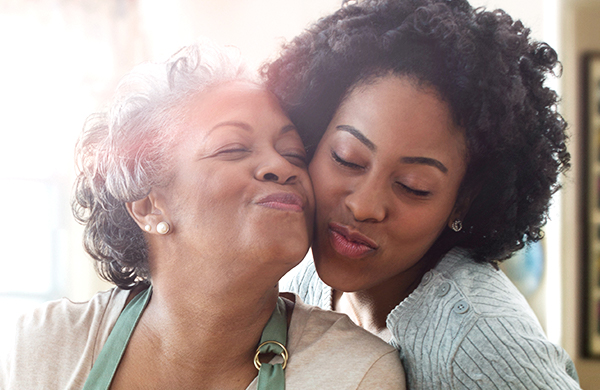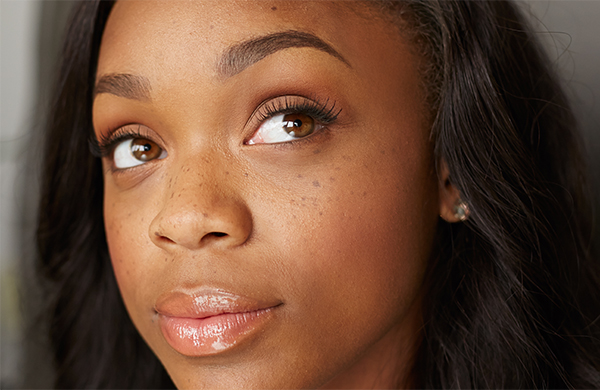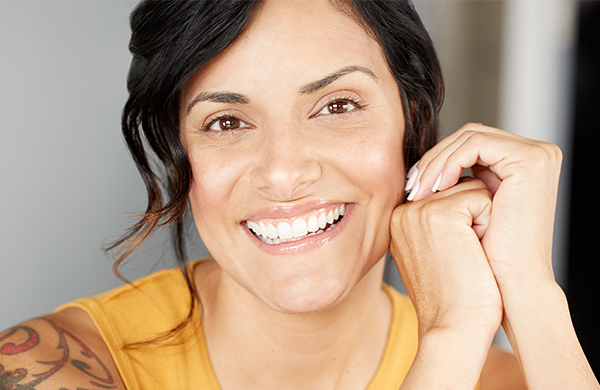
Your body. Your taste in food. Your stance on staying home on a Saturday night to binge-watch Frasier. These are all things that change drastically as you age. So it shouldn’t be a surprise that your skin does, too. And by that token, so should your skin-care routine.
When it comes to the promise of a forever-youthful glow, there's no shortage of options out there. But a recent college grad should hardly be using the same anti-aging skin-care remedies as her grandmother. You'll need to employ a variety of methods throughout life, as our complexions have different needs as we age.
So we sat down with Kaitlyn Dubey, a licensed aesthetician at Oakland Hills Dermatology in Michigan, who gave us the skinny on skin care through the ages.
In Your 20s
At a glance: sunscreen, sleep, retinol

Mom was right. "The best prevention is to use—obviously—sunscreen," Kaitlyn said, adding that it must have an SPF of 30 or higher. "And always reapply every two to three hours." UV light is the number-one cause of all signs of aging: wrinkles, age spots, tan lines from your beach monocle … . A few minutes spent slapping on sunblock now can prevent you from expending countless hours and dollars to smooth out deep creases later.
Sunscreen protects your skin from external damage, but 20-somethings can also employ something that works internally: retinol. "I would recommend people start using retinol in their 20s as a preventative measure for fine lines and aging," Kaitlyn said. Available in myriad forms and concentrations, retinol "speaks" to cells, encouraging them to reproduce at a higher, healthier rate. This helps skin maintain an unlined surface, while antioxidant properties work at keeping facial contours firm.
And if you’ve been trying to find a good excuse for sleeping in, here you go: in your 20s and beyond, sleeping a lot is vital for healthy skin. So is drinking water, eating well, and definitely not smoking—no matter how cool you look in your Sherlock Holmes getup.
In Your 30s
At a glance: retinol, products with growth factors, preventive Botox

If you escaped your 20s wrinkle-free, congrats, but be prepared: this may be the decade when that comes to an end, particularly around your peepers. As Kaitlyn explained it, "Fine lines typically start to appear around the eye area because the skin is very thin."
While continuing to use sunscreen and retinol, 30-somethings should fold a new element into at-home regimens. "It's important to start growth factors," Kaitlyn said, "because as we age, we lose that elasticity and collagen in our skin"—and with them, our facial firmness. Like retinol, growth factors communicate with cells. But when they do their chatting, they "help to stimulate the production of that collagen and elastin." Look for these naturally occurring substances by scanning ingredient labels for acronyms that end in GF: EGF, IGF, VEGF, the list goes on.
If you're interested in the preventive properties of Botox, Kaitlyn recommends starting now. "If you do have those deep fine lines and wrinkles, it will help to keep them soft [in the future],” she said. As with SPF in your 20s, Botox in your 30s is a prevention that’s easier than correction.
In Your 40s
At a glance: eye cream, facials, physical and chemical exfoliation

Even the most diligent sun-blocking beauties are likely seeing some UV damage by now. And while the ghosts of yesterday's beach vacations slowly descend upon complexions, skin cells are changing their behavior.
"Definitely be using retinol and an eye cream,” Kaitlyn said. She recommends that the eye cream contain growth factors, as well as caffeine, which combats short-term puffiness.
Another tip? "It's good to exfoliate because your skin cells start to slow down." Kaitlyn conceded that "everyone should exfoliate, even in your 20s" but said that cells' newly sluggish tempo makes the skin-sloughing practice even more vital in your 40s. Many people benefit from a combination of physical exfoliants (washcloths, gentle scrubs) and the chemical exfoliants (BHAs, AHAs) often used in facials. Together, they stimulate cell turnover, which helps fight and prevent lines, brighten the complexion, and smooth skin's surface.
In Your 50s
At a glance: laser skin treatments, chemical peels, dermal fillers

Just keep on doing what you're doing: blocking the sun, drinking water, and gently spurring cellular activity.
But if you're looking to pave some deeper grooves, it could be time to call an expert. "Laser treatments are our most popular when it comes to people in their 40s and 50s," said Kaitlyn, referring to a broad spectrum of techniques that ranges from intense pulsed light to fractional laser resurfacing. "We have great success with lasers, especially when we're treating years of sun damage."
Another option is to up your chemical-exfoliation game. "We can do deeper peels for deeper fine lines." This is also the age at which some turn to dermal fillers, which Kaitlyn said build up collagen and restore "structure" to the face.
In Your 60s and 70s
At a glance: hydration, moisturizer with hyaluronic acid

"When you're in your 70s, your skin becomes a lot thinner,” Kaitlyn said. And that's not the only change. "Your skin doesn't retain as much moisture and water as it did when you were younger." Hydration is key in the 60s and beyond.
"I always recommend a good moisturizer, maybe something with a high hyaluronic-acid [content] in it," Kaitlyn said, name-checking an agent that retains many times its own volume in water. A single gram of hyaluronic acid, for instance, can retains 6 liters of water.
"And keep on using the retinol," she added.
Check out related reads in the The Guide:
Aging and hormone changes can mean wrinkles and, yes, adult acne. Lessen the effects of time with these skin-care tips for women over 50.
They might not judge you, but they’ve got some pretty good reasons why you shouldn’t do it.





